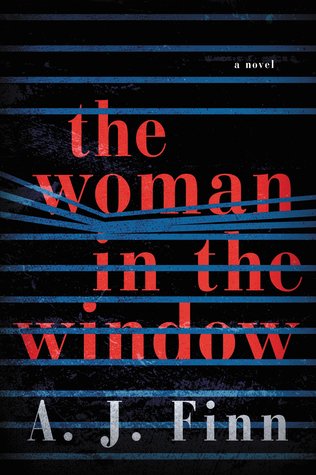The debut book by A. J. Finn delivers a perfect blend of suspense and emotion that had me gripped immediately. The underlying motif of 1940’s mystery thrillers in the vein of Alfred Hitchcock weave through the narrative all the while keeping the story firmly grounded in the present.
We follow Anna Fox, a sufferer of agoraphobia who spends most of her time drinking. watching old movies and snooping on the neighbours. It was clear the author had spent considerable time researching agoraphobia as the daily struggles yet acquiescence of the character felt natural without having to overtly explain anything to the reader. We’re introduced to Anna’s husband and daughter with whom she routinely talks to. I felt the drinking abuse was perhaps a little cliche but it did fit with the 1940’s theme.
A flashback runs throughout many of the middle to late chapters detailing the incident surrounding the source of Anna’s condition. This is where we’re introduced to the first plot twist. On a family skiing trip years previous, Anna, her husband and daughter were involved in a car accident that left them stranded in the open wilderness with Anna being the only survivor. The one way conversations we were privy to had been Anna speaking only to the memories of her family. Heart breaking as it was to find out, it was made obvious far too early on and could have been more impactful had the illusion been shattered closer to the intended reveal.
Further characters of the neighborhood are introduced primarily through camera and telescope lenses (ala Rear Window) and tension continues to rise. Anna begins to doubt her own memories, adding layers of uncertainty to her’s, and the reader’s conclusions. Even the core plot point of Anna viewing a murder through her neighbour’s window is cast into doubt.
The book comes to a climax with the reveal of the murderer of the woman in the house opposite. That being the woman’s sociopathic son who had been spending his time watching Anna and manipulating her throughout the book, posing as a friend on her social media. The idea is chilling but the reveal felt very out of place. Prior to the classic ‘bad guy explains his master plan’ speech, there had been almost no seeds planted that this character was anything of importance. Too much emphasis was placed on red-herrings and misdirection for that “of course it was him!” moment.
Overall I greatly enjoyed reading this, I haven’t had my heart race so fast from a book before. It also spurred me on to watch some older black and white movies with a new perspective.
